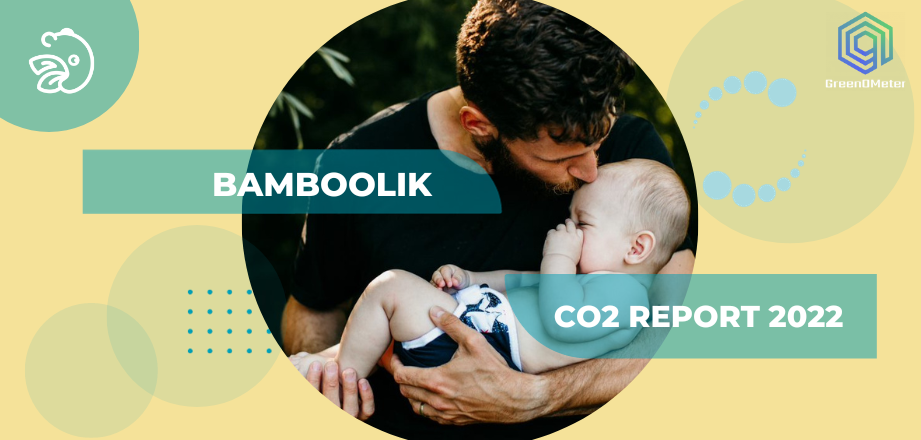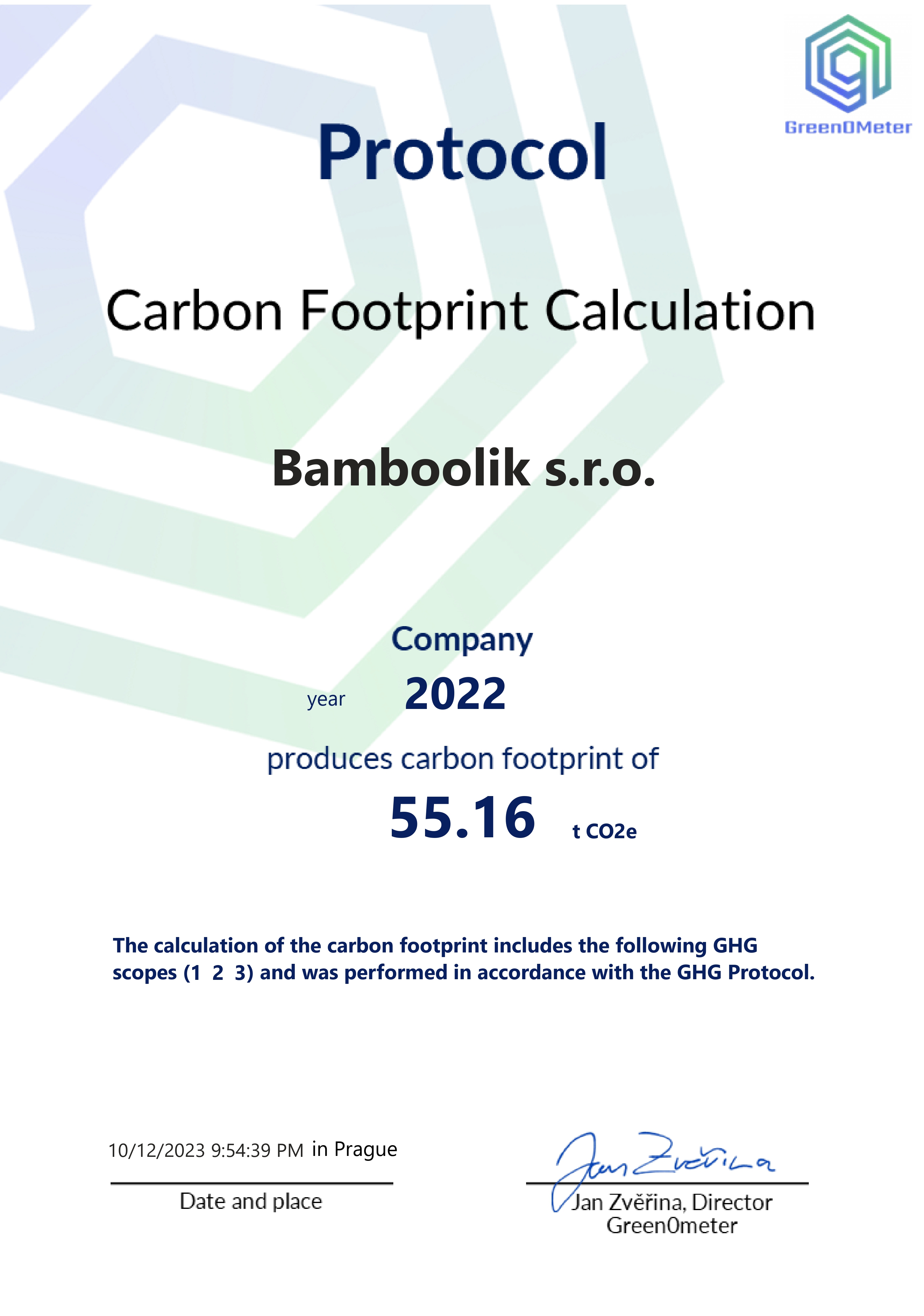Carbon Footprint of Cloth Diapers
Carbon Footprint of Cloth Diapers 40× Smaller than of Disposable Diapers
People who don’t like cloth diapers sometimes say they’re not as eco-friendly as they seem. False! Cloth diapers have a way smaller carbon footprint — we have numbers to prove that.
How to Measure Carbon Footprint
There are multiple methods to measure a carbon footprint = the amount of greenhouse gas emissions produced during a product’s life cycle (PLC). The most renowned and the most respected method is the Greenhouse Gas Protocol method (GHC Protocol/GHCP). That’s the method we go by in Bamboolik — it makes sense to us and it’s well-known worldwide. Our business partners are dispersed all around Europe, and for a lot of them, eco-friendliness and sustainability are key — we need to present a universally understandable calculation to them.
The Greenhouse Gas Protocol divides emissions into three scopes. The highest emphasis is put on Scope 1 – which are direct emissions that the company produces and also fully controls. Scopes 2 and 3 count in indirect emissions, produced by suppliers (that means the company cannot fully control them). To help you understand which emissions are which, here are a few real-life examples – with Bamboolik as the role model.
→ GHG Protocol Scope 1 Emissions
The first scope of greenhouse gas emissions counts in emissions produced directly by the company’s buildings and cars. Bamboolik’s headquarters emits only greenhouse gasses from combustion of natural gas – a side effect of heating. Bamboolik’s cars don’t actually add to our carbon footprint much – we own just one diesel van which does not travel long distances; our other cars are electric or hybrid.
→ GHG Protocol Scope 2 Emissions
The second scope counts in emissions from production of energy that the company uses. For Bamboolik, it’s solely electricity. These emissions are partially under our control (we can be savvy with our electricity bill) but we cannot control whether the electricity is made from renewable sources or whether our electricity supplier considers sustainability in their approach.
→ GHG Protocol Scope 3 Emissions
Scope 3 emissions are absolutely out of our control – they arise within the entire value chain, both upstream and downstream. They could be emissions from business travel (including public transport) or emissions from waste management.
Carbon Dioxide Equivalent
Carbon footprint is measured in a so-called carbon dioxide equivalent (CO2e). It’s a sum of carbon dioxide and other greenhouse gasses emissions (such as methane or nitrous oxide) – the other gasses are calculated to express the same amount of carbon dioxide emissions.
Bamboolik’s Carbon Footprint
In 2022, Bamboolik’s carbon footprint accounted for 55.16 tons of CO2e (tCO2e).
From that, Scope 3 emissions (which we cannot control) made up almost 80 %!
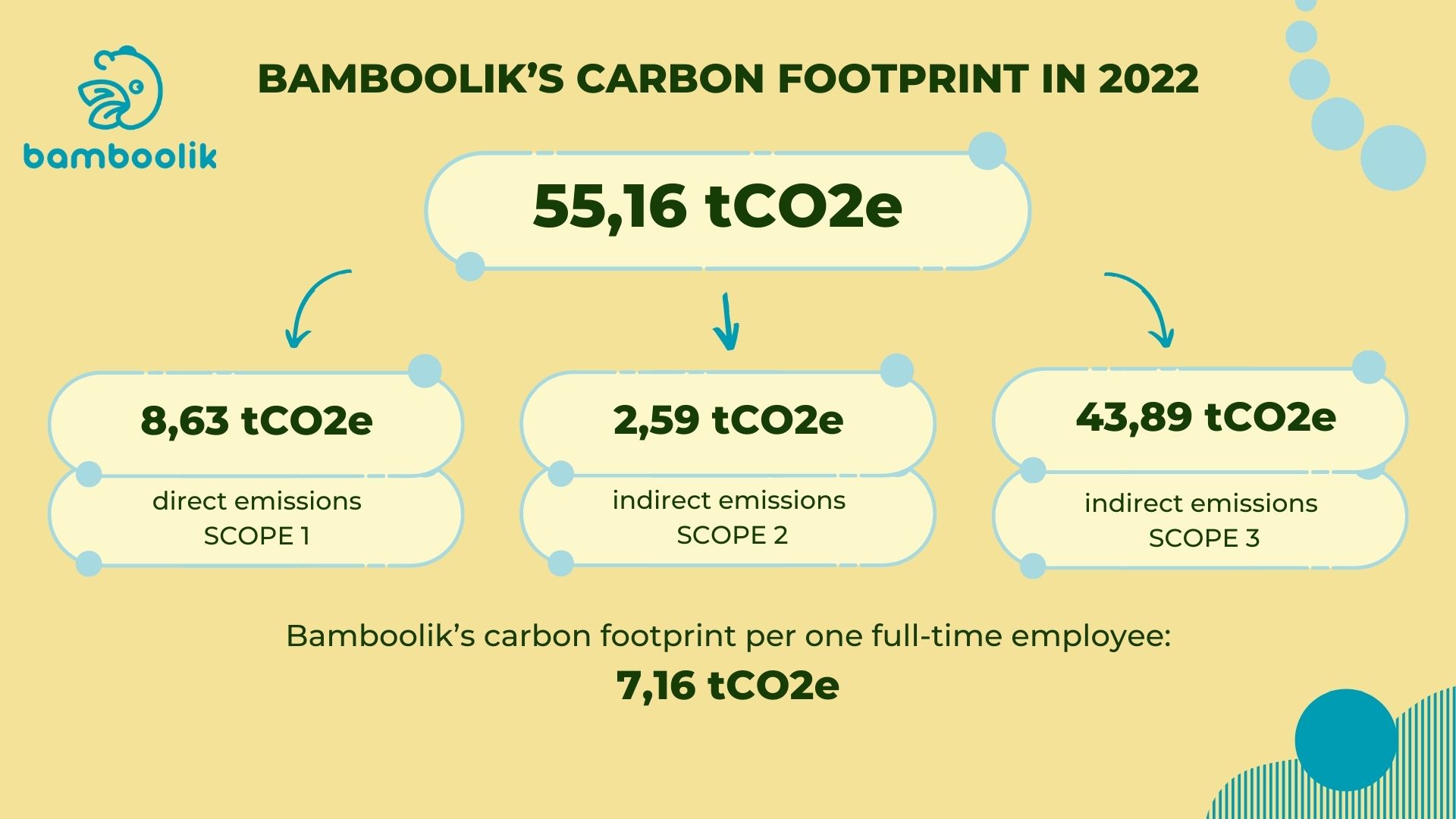
Within our homeland, the Czech Republic, we are deeply under the average carbon footprint of a company per employee (12 tCO2e). We’re also under average on the European scale (8 tCO2e).
Eco-friendly Diapers
Given the presented numbers, there could be no doubt that Bamboolik is a sustainable business. But what about our products? Are they as eco-friendly as the company itself? To answer this question, we calculated the carbon footprint of our flagship products.
For the sake of this calculation, we divided our portfolio into three product categories:
- cloth diapers,
- eco-friendly period products (reusable sanitary pads and panty liners),
- accessories – apart from diaper accessories (such as washable changing pads), we also make and sell products for an eco-friendly home (such as reusable cleansing pads).
The picture below shows the amount of CO2 equivalent per one product (this time in grams, not tons) released in the air during manufacturing. We have reached these numbers by dividing our entire carbon footprint per product line according to how many items of each product we had sold in the year 2022.
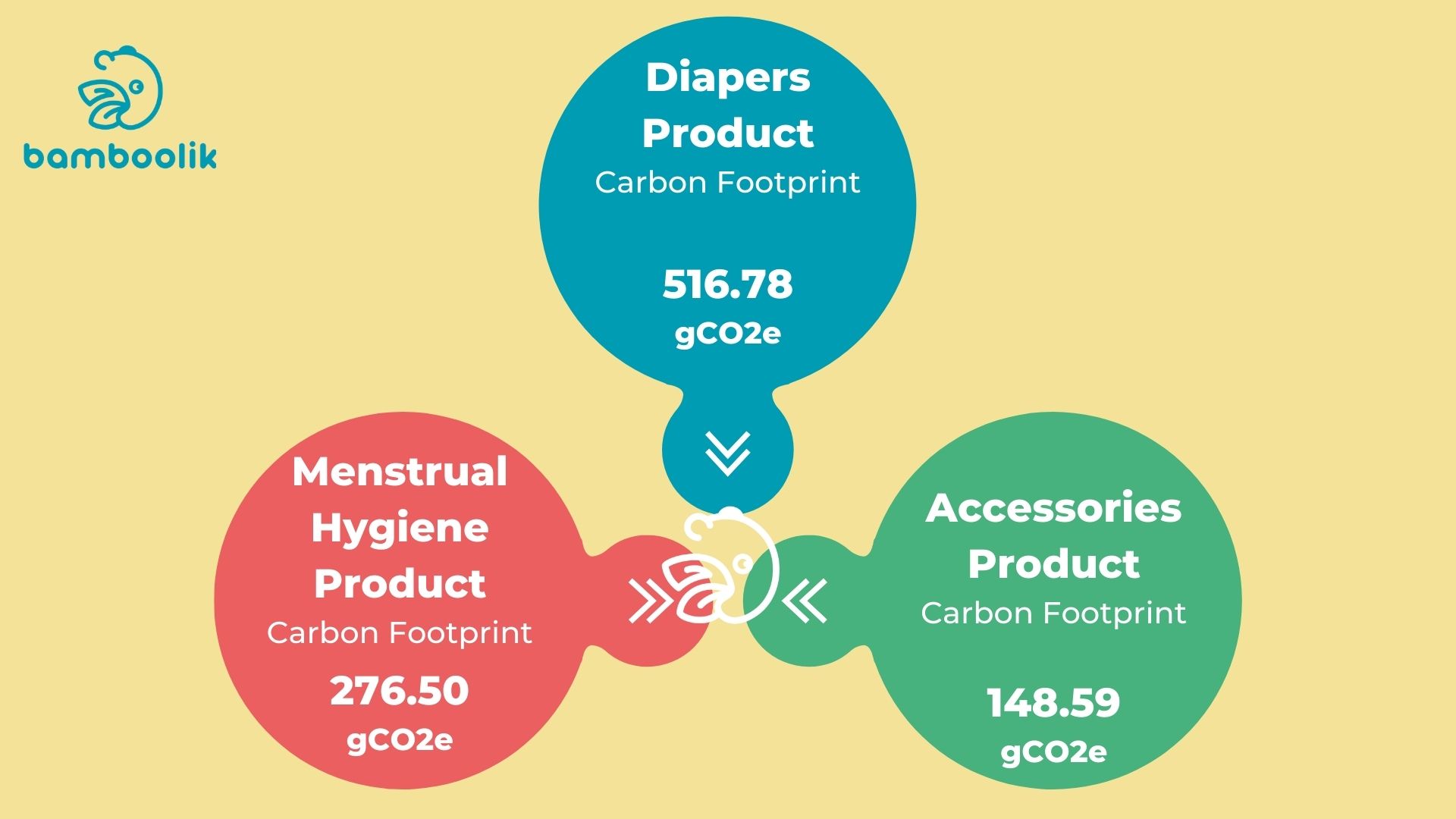
Cloth Diapers Vs Disposable Diapers: Carbon Footprint
The carbon footprint of one cloth diaper is approximately 516.78 gCO2e. Before we compare this number with a disposable diaper’s carbon footprint, we need to calculate the carbon footprint of a cloth diaper for a single use. Cloth diapers are not intended to be used just once!
That said, we can only estimate the number of single uses for a cloth diaper. Someone gets a large cloth diaper stash and then uses an individual diaper once in three days. Someone has a humble stash, doesn’t mind washing diapers every day, and uses a particular diaper at least once a day. Some people use cloth diapers consecutively on three babies, others have just one child. Given these irregularities, we agreed on the following approximation:
On average, a child uses diapers for about 2.5 years. The average number of diapers per day is 6. 2.5×365×6 makes for 5,475 diaper changes. A sufficient diaper stash would be composed of approx. 24 cloth diapers (such as our Large Diaper Set – which, in our book, contains a sustainable number of diapers that you would wash every other day). That means one diaper from your 24-diaper stash would be used 230 times over the average 2.5 years.
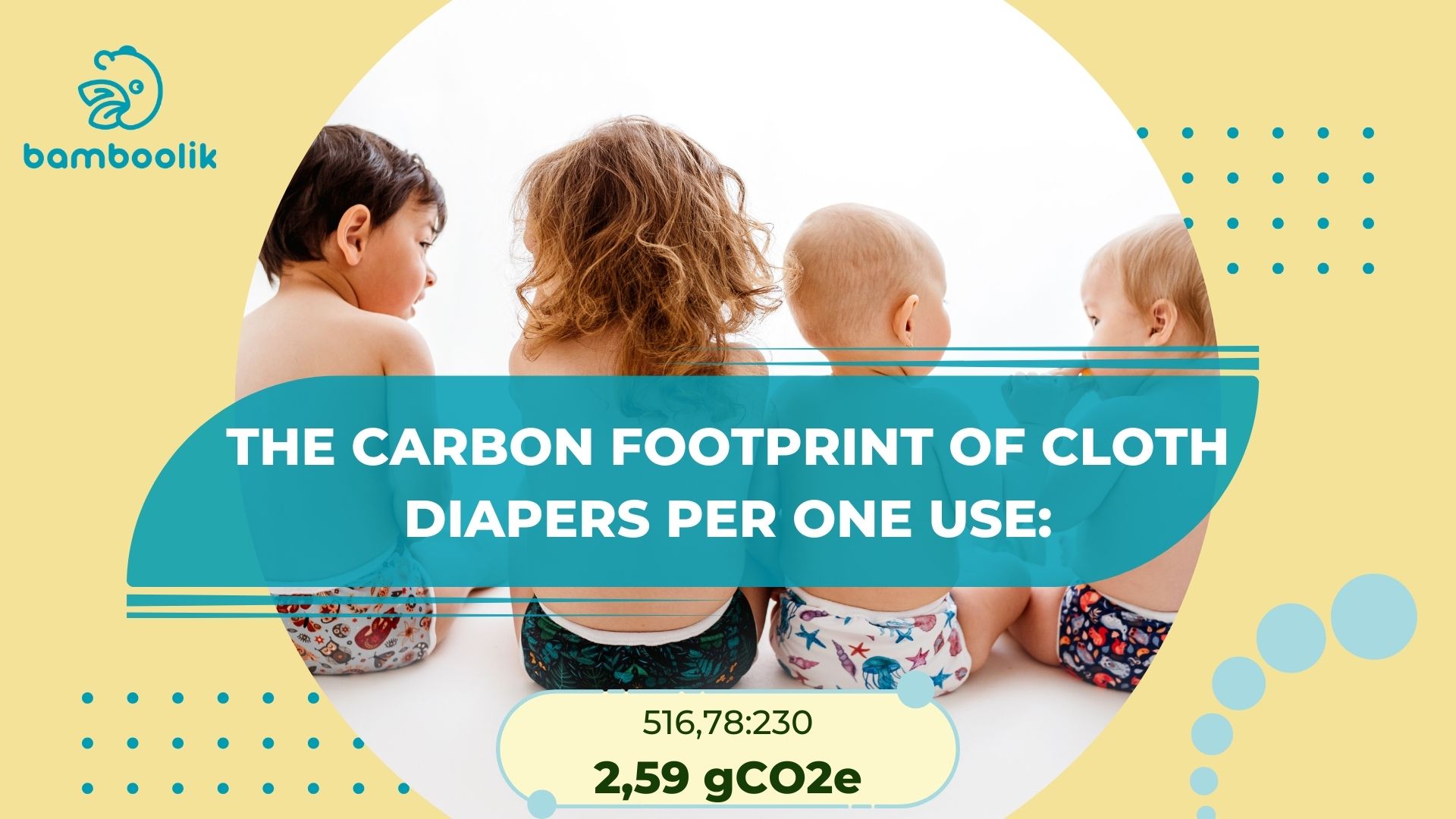
A study published in the ScienceDirect magazine sets the carbon footprint of one disposable diaper to 89 gCO2e. Almost forty times more than the carbon footprint of a cloth diaper!
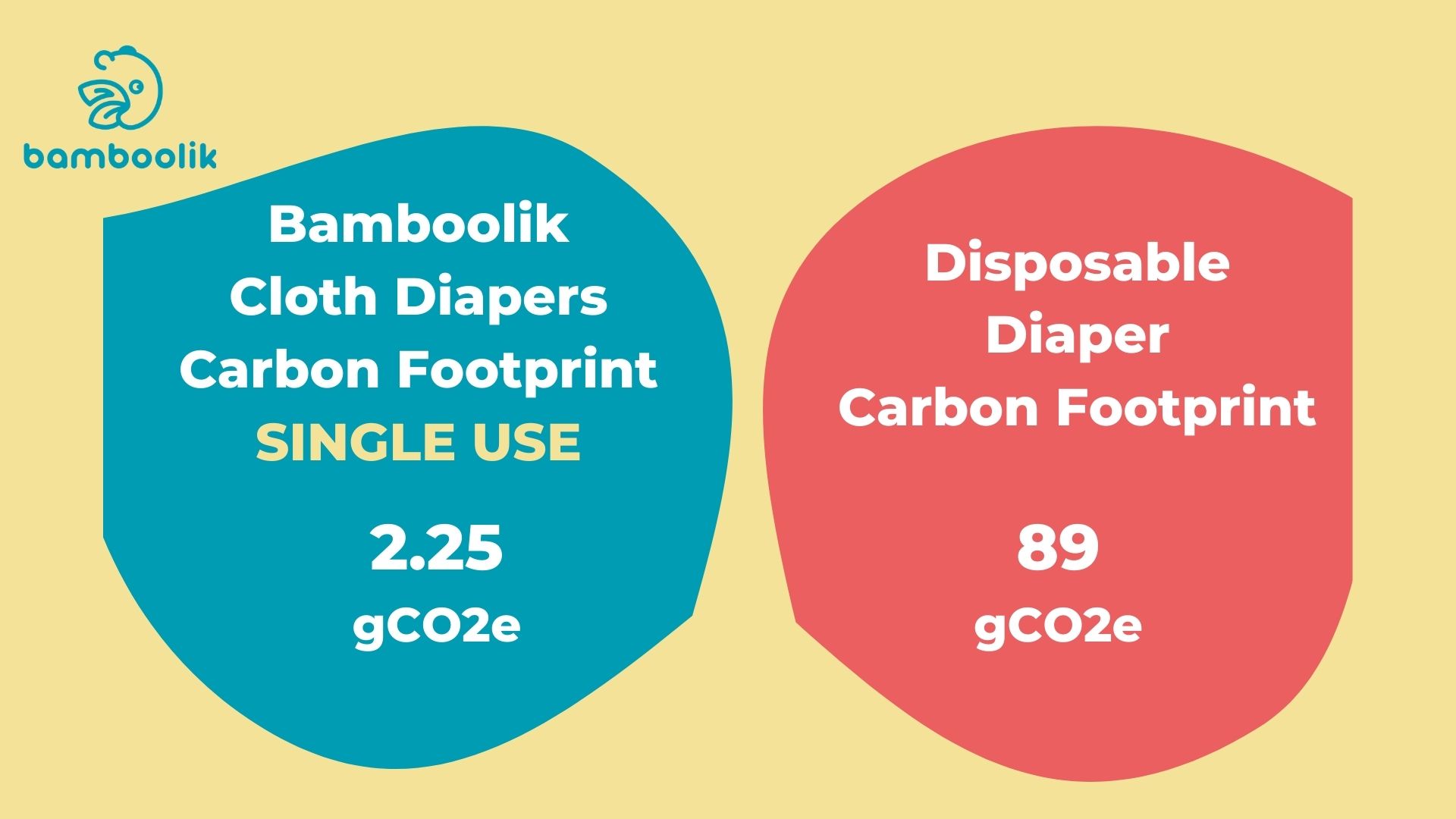
Curious to find out more about how we calculated our carbon footprint and what are the exact numbers? Here’s our CO2 report as a presentation.
More on our approach to sustainability and ecology:

